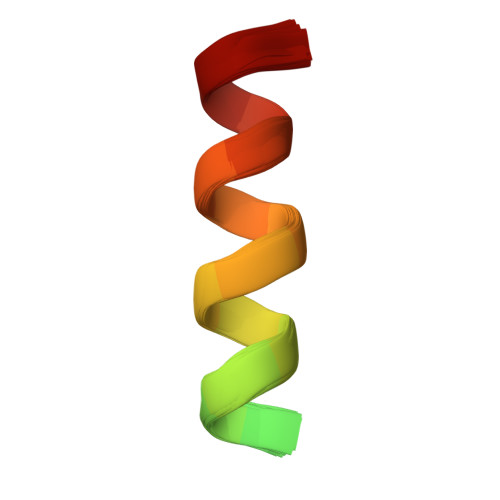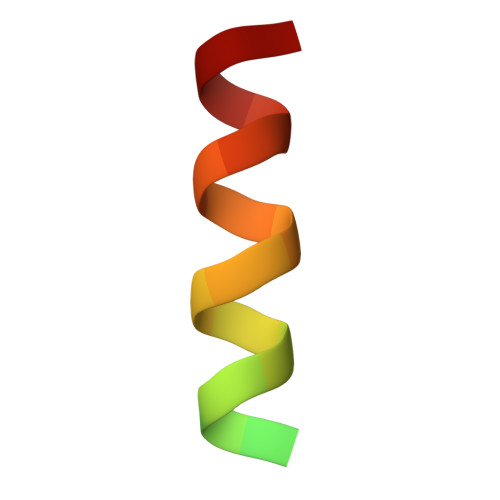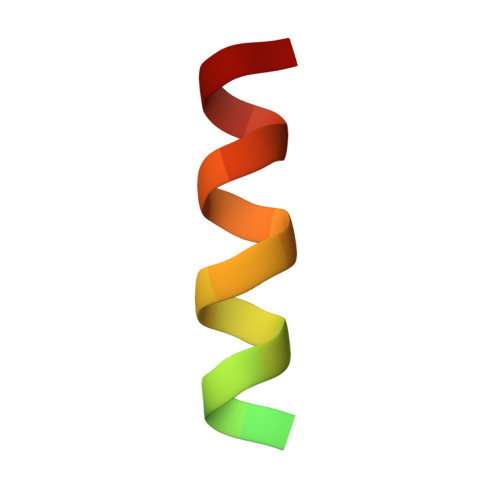Structural Basis for Translational Stalling by Human Cytomegalovirus and Fungal Arginine Attenuator Peptide.
Bhushan, S., Meyer, H., Starosta, A.L., Becker, T., Mielke, T., Berninghausen, O., Sattler, M., Wilson, D.N., Beckmann, R.(2010) Mol Cell 40: 138
- PubMed: 20932481
- DOI: https://doi.org/10.1016/j.molcel.2010.09.009
- Primary Citation of Related Structures:
2XL1 - PubMed Abstract:
Specific regulatory nascent chains establish direct interactions with the ribosomal tunnel, leading to translational stalling. Despite a wealth of biochemical data, structural insight into the mechanism of translational stalling in eukaryotes is still lacking. Here we use cryo-electron microscopy to visualize eukaryotic ribosomes stalled during the translation of two diverse regulatory peptides: the fungal arginine attenuator peptide (AAP) and the human cytomegalovirus (hCMV) gp48 upstream open reading frame 2 (uORF2). The C terminus of the AAP appears to be compacted adjacent to the peptidyl transferase center (PTC). Both nascent chains interact with ribosomal proteins L4 and L17 at tunnel constriction in a distinct fashion. Significant changes at the PTC were observed: the eukaryotic-specific loop of ribosomal protein L10e establishes direct contact with the CCA end of the peptidyl-tRNA (P-tRNA), which may be critical for silencing of the PTC during translational stalling. Our findings provide direct structural insight into two distinct eukaryotic stalling processes.
Organizational Affiliation:
Gene Center and Department of Biochemistry and Center for integrated Protein Science Munich, University of Munich, Feodor-Lynen-Strasse 25, 81377 Munich, Germany.
















